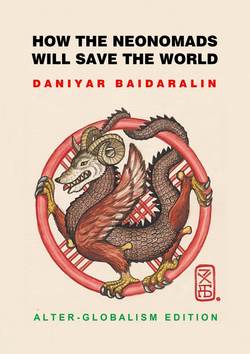Читать книгу How the Neonomads will save the world. Alter-globalism edition - Daniyar Z Baidaralin - Страница 6
THE CONCEPT: EURASIAN NOMADIC CIVILIZATION
Nomadic production
ОглавлениеThe Eurasian Nomads developed their own way of production and industries. Some were advanced and happened for the first time in the Great Eurasian Steppe. For example, the metallurgy. The EN were the first to discover large deposits of metal ore in Altai, Central and Northern Kazakhstan. Most of them are still being extracted today on an industrial level.
The EN were equipped with bronze weapons and tools, when in some pockets of the world people still used Stone Age technologies. When the Altai nomads invented steel production from iron ore and started making steel tools and weapons, it gave them advantage over the Bronze Age adversaries. It helped them to forge mighty empires in the Early Iron Age, and also led to a spread of iron technology all over the Afro-EuroAsia, contributing to a transition to the Iron Age.
These mining and steel productions were stationary, tied to locations where the natural ore were found. Apart from that, the EN learned to provide themselves with all necessities on the move. The ever-roaming lifestyle prevented them from building large manufactures and craftsmen guilds, as it was common in the SC nations. Instead the nomads adjusted their needs and production mode to whatever technologies were possible within the nomadic economy.
The women and youth in nomadic families were skillful craftspersons, capable of producing high-quality felt and animal skins; they weaved wool goods, sew clothes, made yurt’s soft elements, bedding items, and etc. Men were always busy tanning the animal leathers and making leather goods: saddles, leather armor, belts, pouches, boots, horse and camel harnesses, and etc.; woodworking: building the yurt parts, furniture, wooden dishes, making bows and arrows; ironworks: making tools, weapons, equipment parts; and pottery. All of these works were produced either right in the yurts or simply outdoors, without city walls, factories, and shops.
The nomadic families were able to produce goods to cover 100% of their everyday needs. Of course, they never skipped the opportunity to buy or exchange goods with their neighboring SC nations. In fact, many nomadic tribes were heavily involved in trade, either directly or by providing security for passing trade caravans, especially during the Silk Road era. But overall they could get along on their own with complete self-sufficiency.
Therefore, we know that the nomadic production was highly versatile, adaptable, mobile, resourceful, ecological, minimalist, and waste-free. This is an important quality, as I will show how this approach can become crucial in the future of humanity.
